
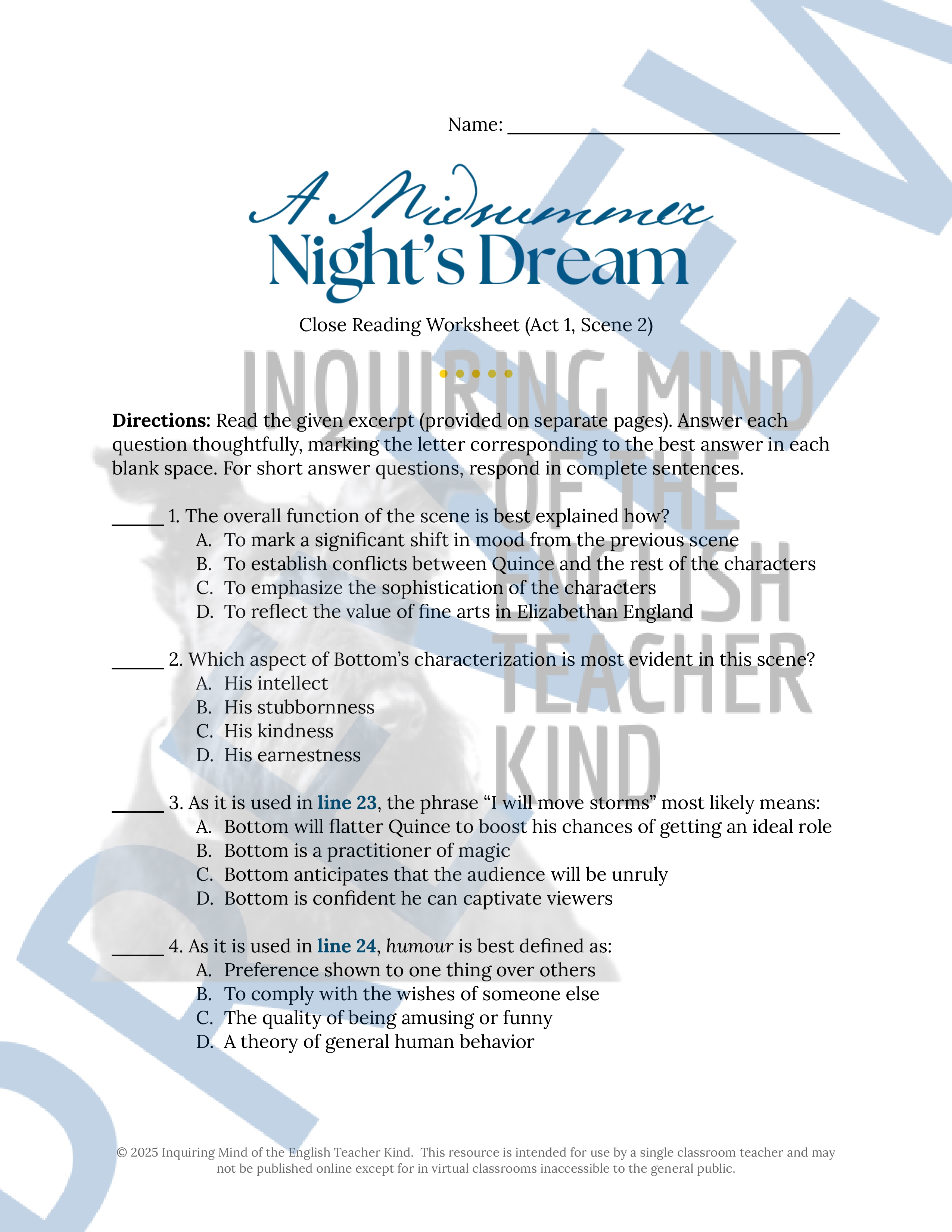
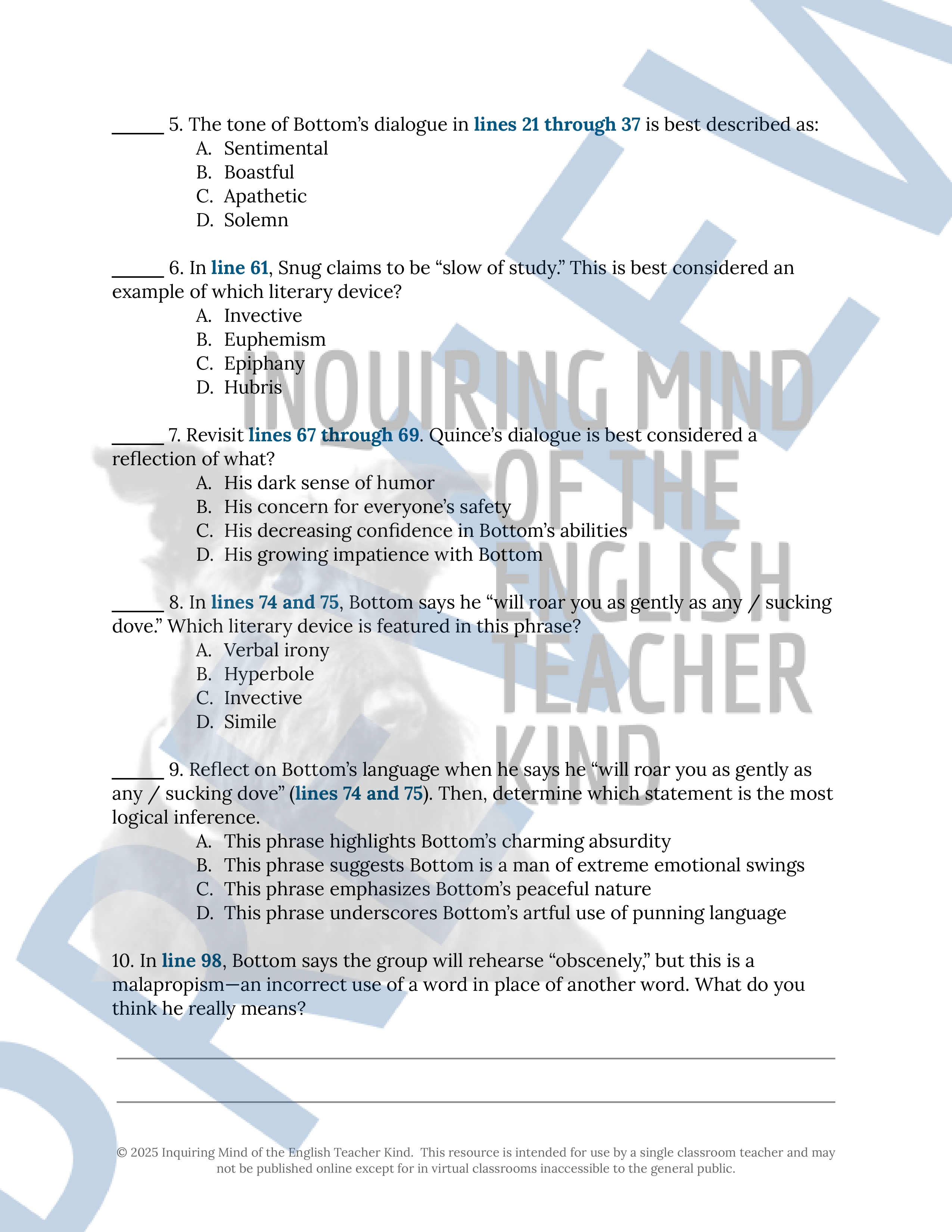
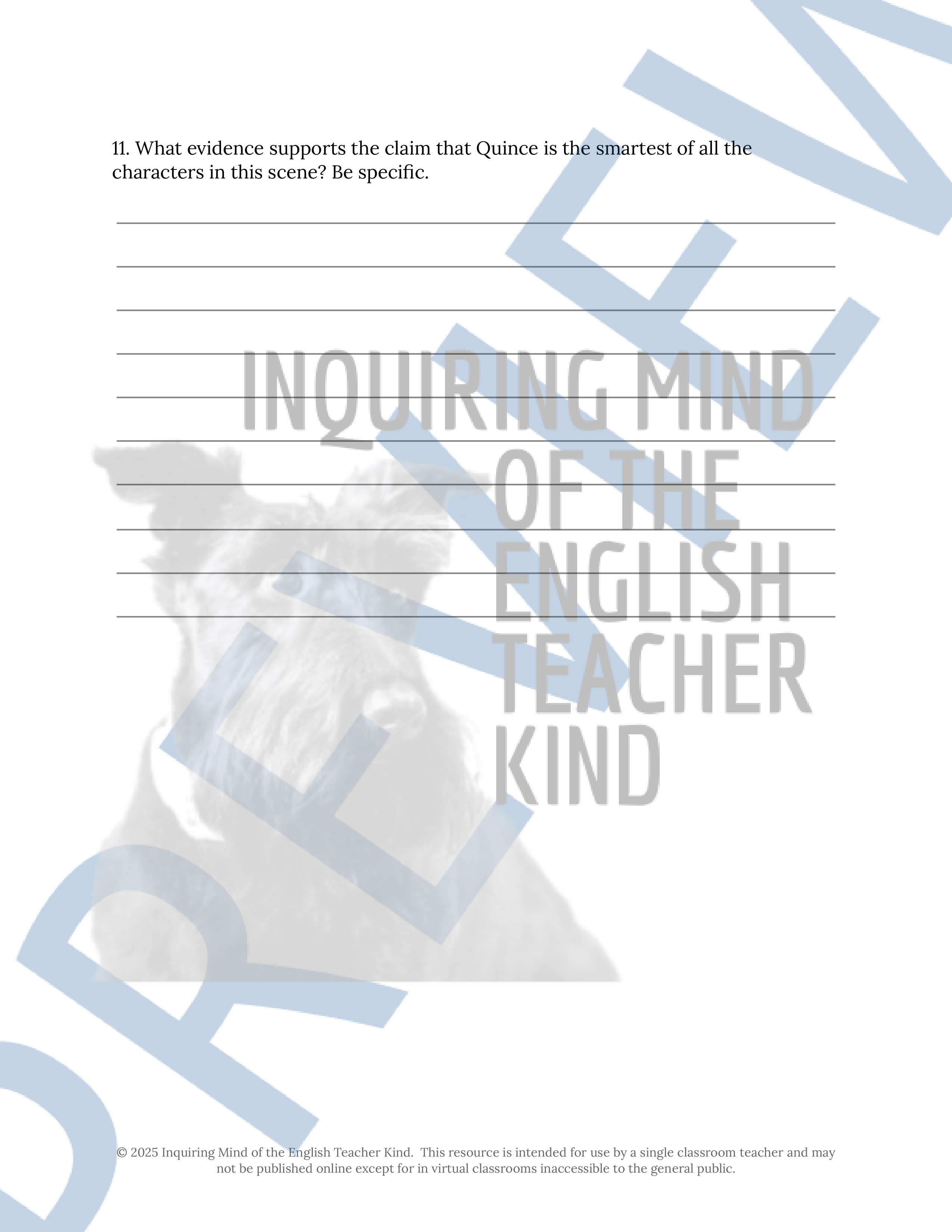
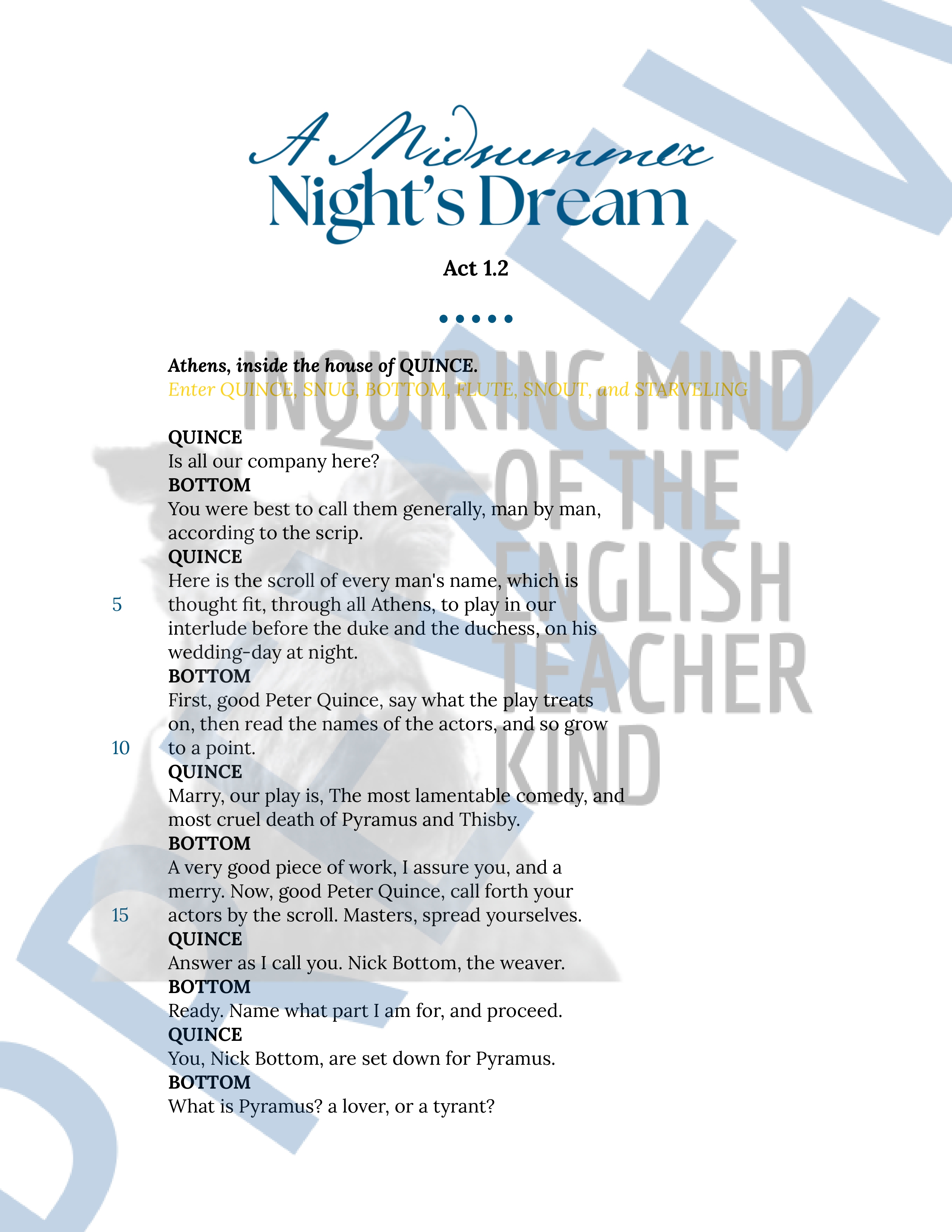
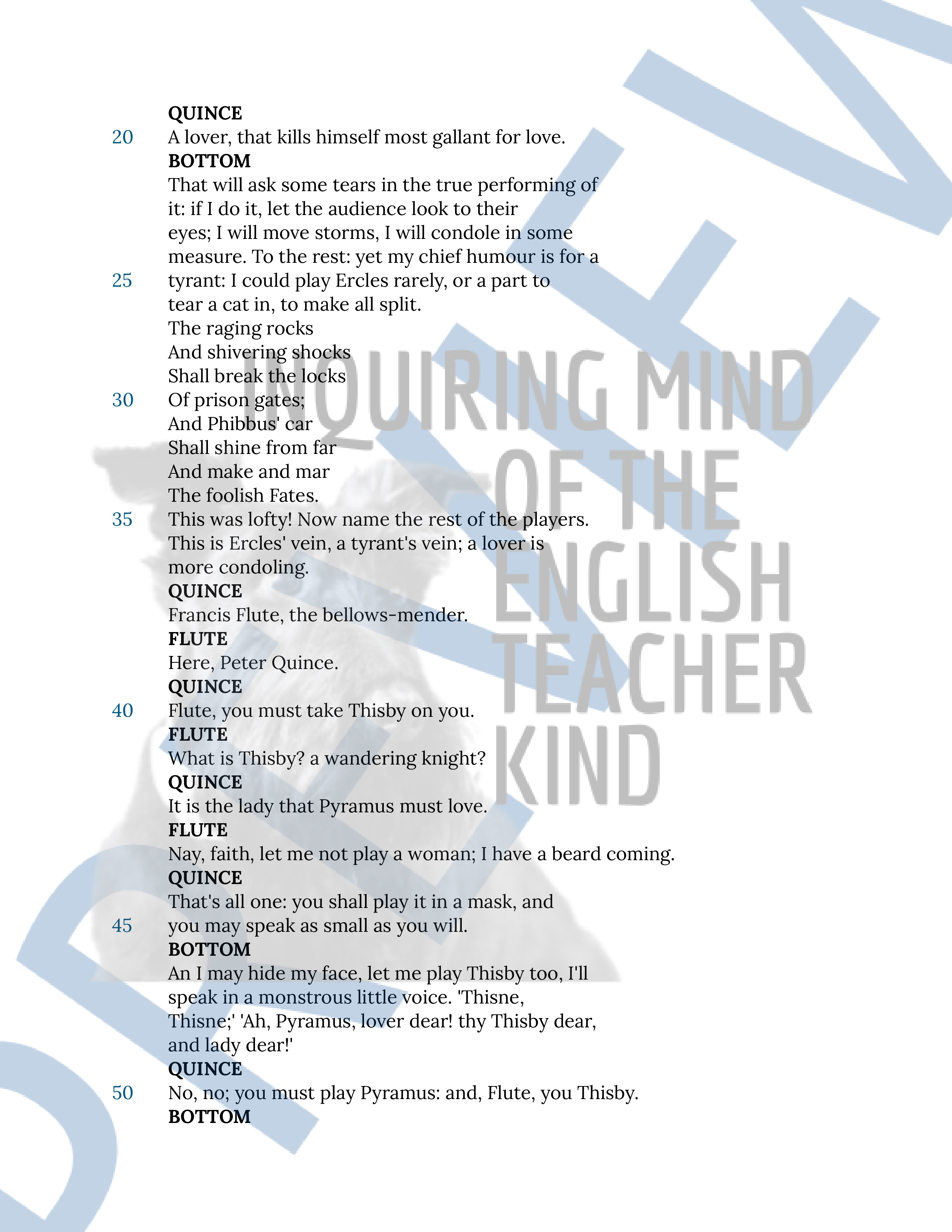
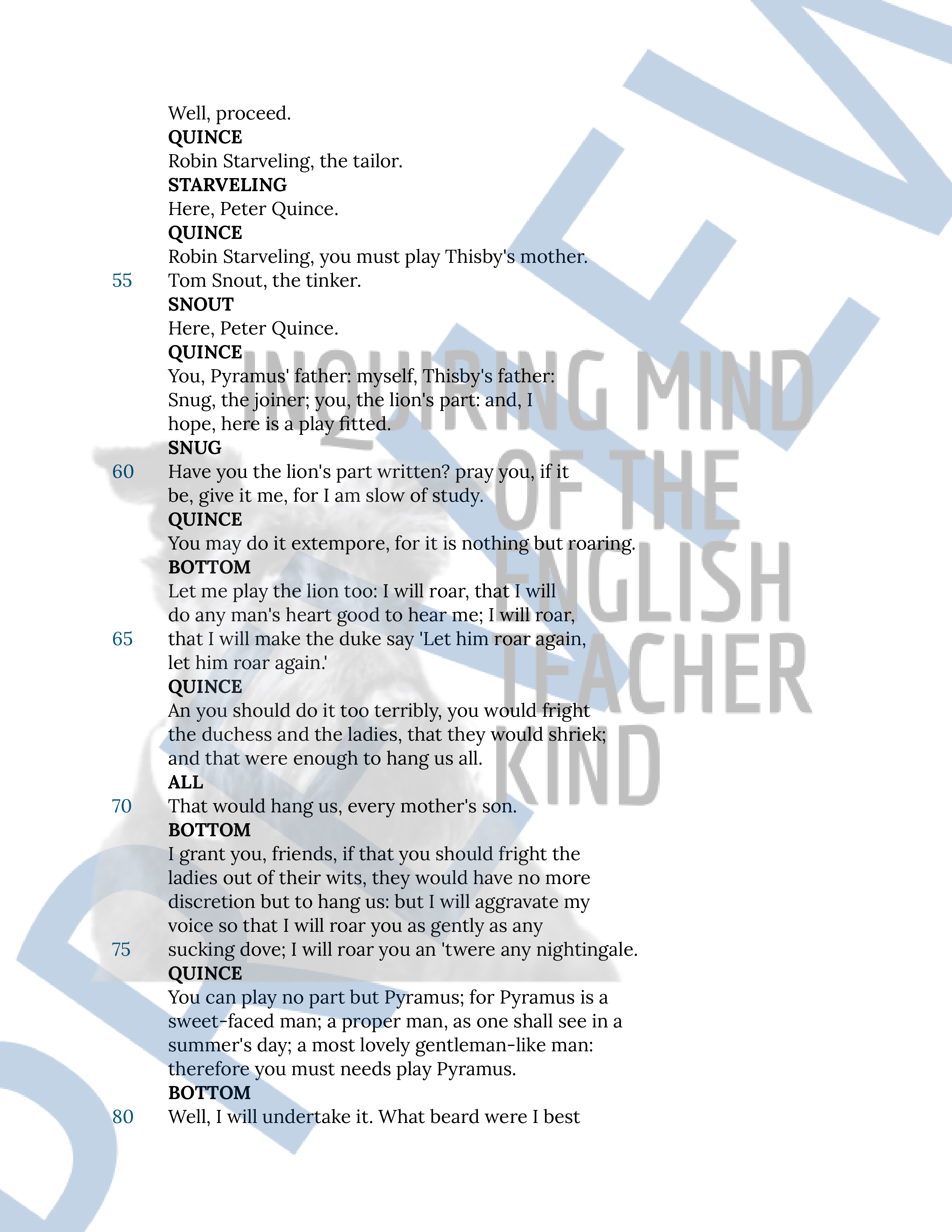
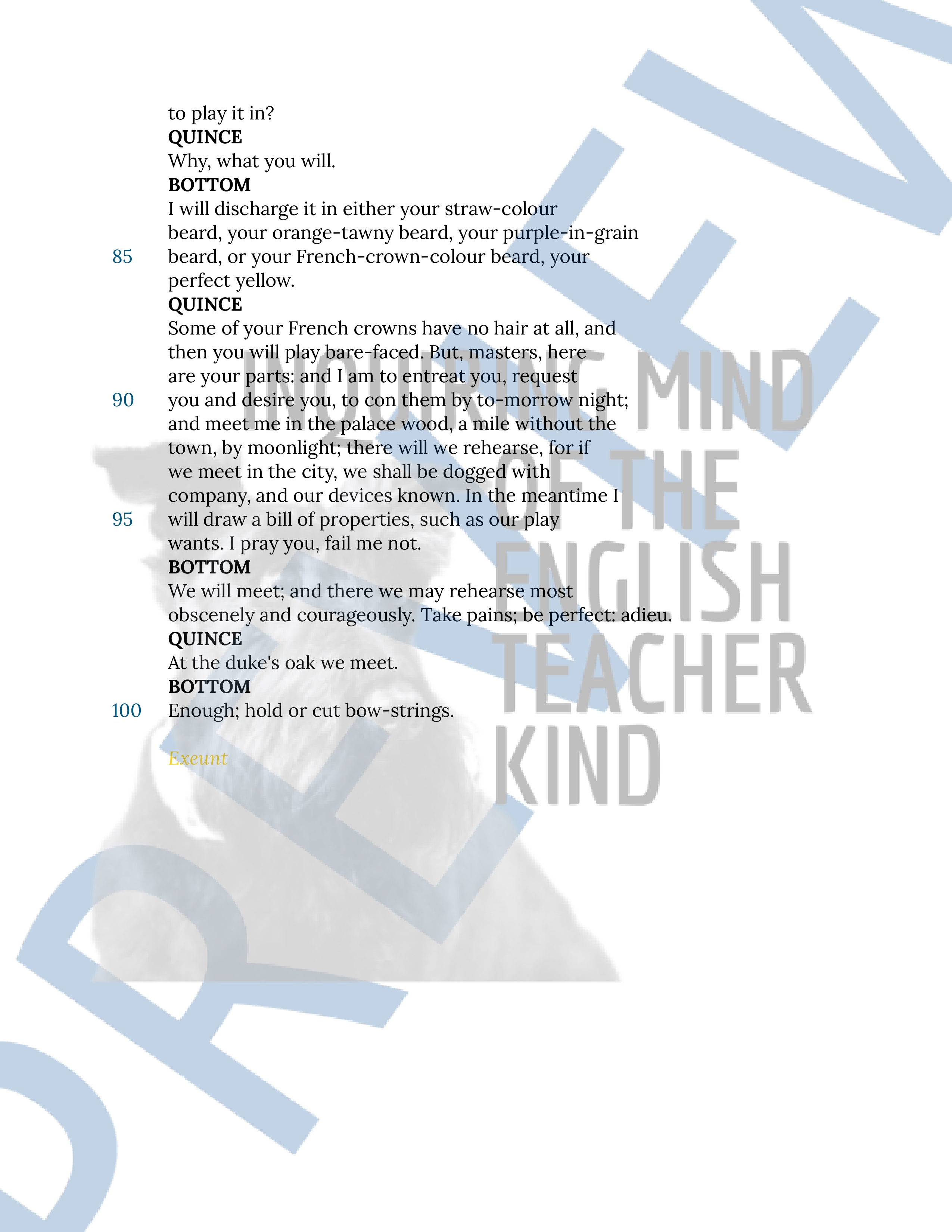
Help students go beyond basic reading comprehension and support the development of critical thinking and literary craft analysis skills with this close reading worksheet covering Act 1, scene 2, of William Shakespeare’s comedy A Midsummer Night’s Dream. An answer key is included. Materials are delivered in editable Word Document and printable PDF formats. By completing this exercise, students will:
- Read for literal comprehension
- Infer the intended effects of Shakespeare’s word choices and figurative language
- Activate prior knowledge
- Define words as they are used in the text
- Determine the function of the scene
- Describe tone in context
- Explore how characters think, behave, interact, and develop
- Contrast Quince’s intellect with that of other characters
- Apply knowledge of literary devices such as euphemism, malapropism, simile, and more
- Write about Shakespearean works with clarity, accuracy, and precision
- Support inferences and claims with sound reasoning and relevant evidence
- Come to class better prepared for discussions
Get this resource as part of a bundle and save up to 29%
A bundle is a package of resources grouped together to teach a particular topic, or a series of lessons, in one place.
A Midsummer Night's Dream Quizzes, Worksheets, Test, and Answer Keys Bundle
Use this low-prep bundle to eliminate assessment-planning responsibilities and help high school readers engage meaningfully with William Shakespeare's comedy *A Midsummer Night's Dream*. Plot-based quizzes (one per Act), vocabulary development activities (three per Act), close reading analysis worksheets (one per scene), a final exam, and answer keys are provided. Materials are delivered in editable Word Document and printable PDF formats. With these activities and assessments, students will do the following: * Read for literal comprehension * Infer the intended effects of Shakespeare's word choices and figurative language * Consider what the given excerpt reflects about Shakespeare's mindset * Describe tone in context * Determine the functions of given details/excerpts * Explore how characters think, behave, interact, and develop * Compare and contrast characters * Evaluate whether Oberon's use of magic is beneficial in any way * Evaluate how the term paramour (as it is used in the text) is applicable to the character of Bottom * Identify the intended audience of Puck's concluding speech (epilogue) * Apply knowledge of literary devices such as allusion, assonance, dramatic irony, euphemism, epiphany, hyperbole, malapropism, metaphor, onomatopoeia, personification, simile, situational irony, symbolism, verbal irony, and more * Conduct research as needed to answer questions about mythological, historical, and literary figures (Hecate, Tartar, and Robin Goodfellow) * Consider themes in context * Generate an essay articulating a significant theme and exploring how it is developed over the course of the play * Support inferences and claims with sound reasoning and relevant evidence * Write about Shakespearean drama with clarity, accuracy, and precision
A Midsummer Night's Dream Close Reading Analysis Worksheets and Answer Keys Bundle
Challenge students to move beyond basic reading comprehension and exercise close reading analysis skills while engaging with *A Midsummer Night's Dream* by William Shakespeare. The close reading activities are rigorous enough for students to find deeper meaning in the text, yet they are convenient in terms of quickly and efficiently gathering data on students' textual analysis skills. Included are nine close reading worksheets and answer keys. Materials are delivered in editable Word Document and printable PDF formats. By the end of the play, students will have done the following (and more): * Read for literal comprehension * Infer the intended effects of Shakespeare's word choices and figurative language * Consider what the given excerpt reflects about Shakespeare's mindset * Describe tone in context * Determine the functions of given details/excerpts * Explore how characters think, behave, interact, and develop * Compare and contrast characters * Evaluate whether Oberon's use of magic is beneficial in any way * Evaluate how the term paramour (as it is used in the text) is applicable to the character of Bottom * Identify the intended audience of Puck's concluding speech (epilogue) * Apply knowledge of literary devices such as allusion, assonance, dramatic irony, euphemism, epiphany, hyperbole, malapropism, metaphor, onomatopoeia, personification, simile, situational irony, symbolism, verbal irony, and more * Conduct research as needed to answer questions about mythological, historical, and literary figures (Hecate, Tartar, and Robin Goodfellow) * Consider themes in context * Write about Shakespearean works with clarity, accuracy, and precision * Support inferences and claims with sound reasoning and relevant evidence * Come to class better prepared for discussions
A Midsummer Night's Dream Act 1 Quiz, Analysis Worksheets, and Vocabulary Games
Help students navigate Shakespeare's vocabulary, demonstrate basic reading comprehension, analyze plot, and explore literary elements with this bundle of formative assessments covering Act 1 of Shakespeare's comedy *A Midsummer Night's Dream*. A plot-based quiz, a vocabulary application activity, a crossword puzzle, a word search game, two close reading worksheets (one per scene), and answer keys are provided. Materials are delivered in editable Word Document and printable PDF formats. By engaging with these activities, students will: * Read for literal comprehension * Infer the intended effects of Shakespeare's word choices and figurative language * Activate prior knowledge * Define words as they are used in the text * Determine the function of a given scene * Describe tone in context * Explore how characters think, behave, interact, and develop * Contrast Quince's intellect with that of other characters * Apply knowledge of literary devices such as allusion, euphemism, malapropism, metaphor, personification, simile, situational irony, and more * Write about Shakespearean works with clarity, accuracy, and precision * Support inferences and claims with sound reasoning and relevant evidence * Come to class better prepared for discussions
Something went wrong, please try again later.
This resource hasn't been reviewed yet
To ensure quality for our reviews, only customers who have purchased this resource can review it
to let us know if it violates our terms and conditions.
Our customer service team will review your report and will be in touch.